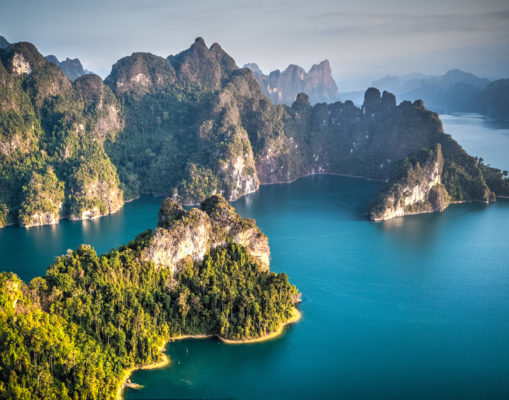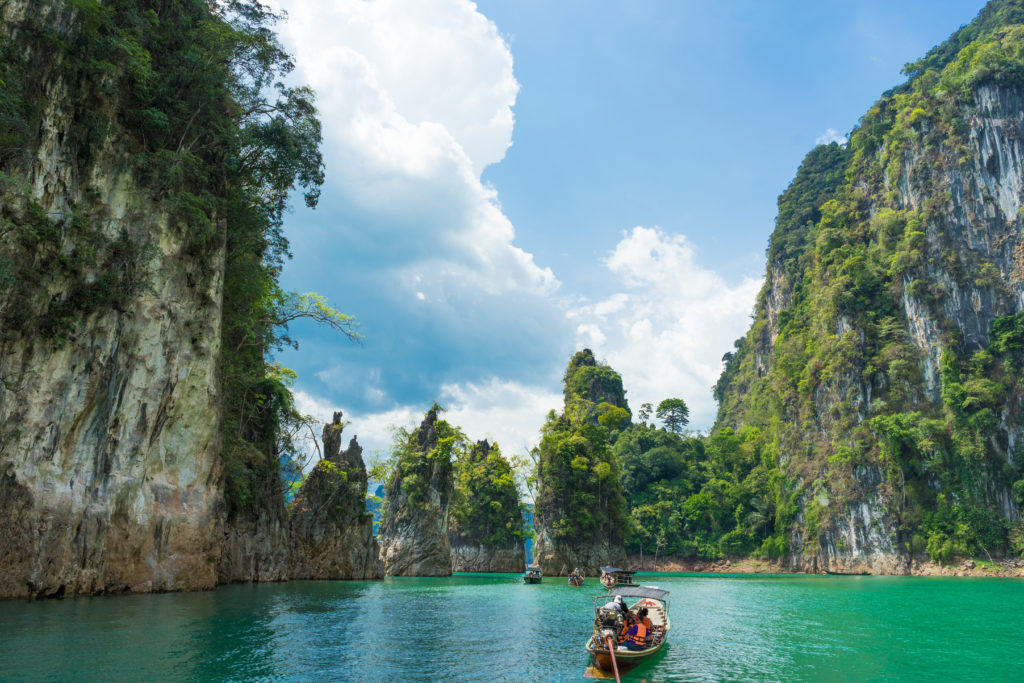
In a funny twist of fate, a group of rebels hiding out in a rainforest may have been the key in preserving it for posterity.
The rebels kept the Thai Army busy in the late 70s and early 80s, unwittingly preventing the entry of mining and logging interests in Khao Sok. By the time the insurgency was over, Khao Sok had already been declared a National Park in 1980 by the Royal Forest Department, putting an end to most major environmental challenges.
Today, visitors to Khao Sok National Park in Southern Thailand can drive in and enjoy the benefits of the park. The area is comprised of lush rainforest, limestone (karst) landscape, and plenty of wildlife hiding in the thickets—including tigers, hornbills, elephants, and long-tailed macaques.
In 1987, a 165-sq. km. reservoir, now known as Cheow Larn Lake, was created in Khao Sok, further adding to the beauty to be explored.
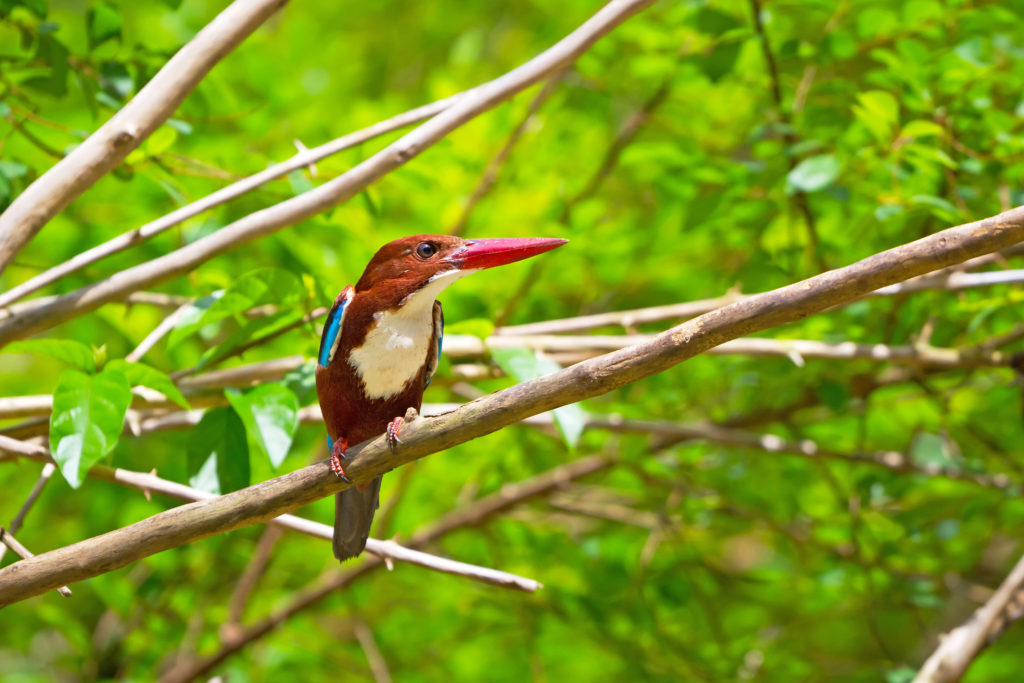
Getting to Khao Sok
The entire Khao Sok natural reserve covers 739 sq. km. in Surat Thani Province.
Surat Thani Airport is the nearest airport to Khao Sok. From there, travelers can take a taxi or a van to Surat Thani and then take a taxi, bus or minivan (12go.asia / tickets.co.th) down Highway 401 to the park. A similar bus service from Phuket takes visitors to Khao Sok, taking four hours to cover the distance.
Visitors can enter the park through two separate entrances. The first is through the park’s headquarters near Khlong Sok Village. The other takes them to Cheow Larn Lake near Ban Ta Khun.
The two entrances are 50 km from each other, separating the park into two worlds—each offering unique opportunities for accommodation and adventure.
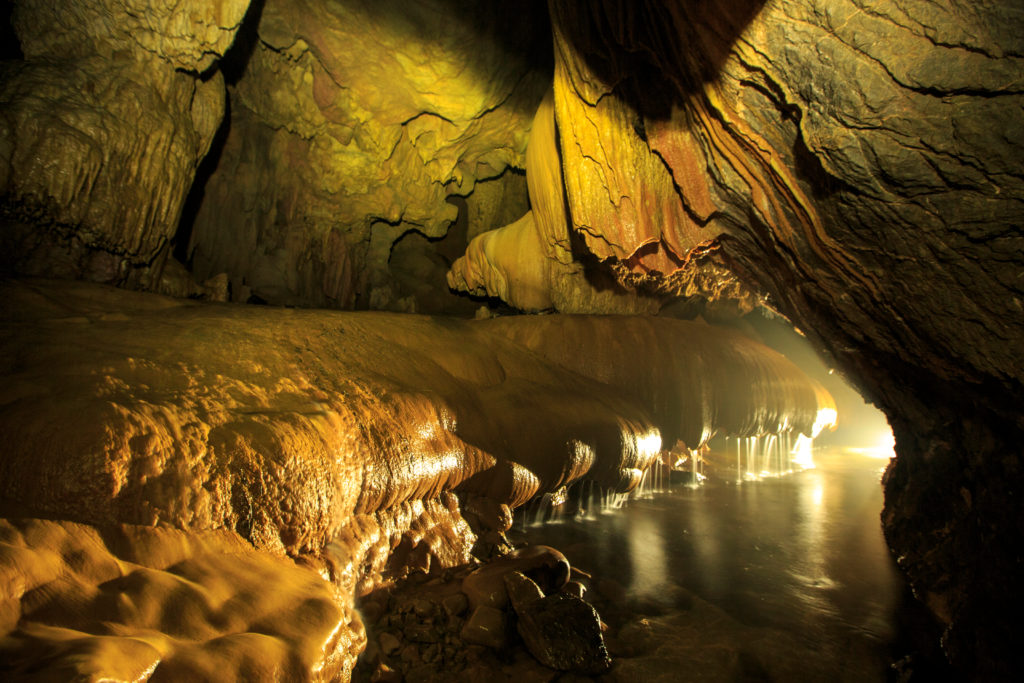
Jungle Adventures in Khao Sok
Various options for accommodation can be found at Khlong Sok Village which precedes the Visitors’ Center (Google Maps) at Khao Sok’s main entrance. You can book tours around Khao Sok from the providers in the village or your chosen accommodation’s front desk.
The Visitors’ Center is the main starting point for many jungle adventures within the park, such as the following:
– Khao Sok hiking trails start at the visitors’ center, where you can also pick up maps for independent hikes into the park’s interior. Alternatively, for about 600 Baht ($18), you can hire a guide who knows the best places to see the local waterfalls, wildlife watering holes, and bamboo thickets to take you on a half-day hike.
Three waterfalls can be visited independently: Wing Hin, Bang Hua Rad, and Sip-Et Chan. Two waterfalls require guides to access: Than Kloy and Than Sawan. Both are located along the same trail and are usually covered in a single hike.
– Caving in Khao Sok requires varying amounts of physical endurance. Easy caves like Pra Kay Petch Cave take no more than 15 minutes to walk through, while Nam Talu Cave requires you to put on head torches and wade through an underground stream to traverse the passage’s 850-meter length.
– Wildlife spotting is a near-certainty for visitors who stay for more than two days and arrange for hikes deep into the jungle. You might spot indigenous animals like Malayan sun bears, Asian elephants, long-tailed macaques, and Oriental Pied Hornbills.
– Night safaris. Short, after-dark hikes around the park reveal a landscape that never sleeps: a cacophony of cicadas and grasshoppers, civet cats, slow loris, and deer lurk in the brush. Night safari hikes start at 7:30 pm and can be arranged at your hotel.
The following activities are best arranged with your hotel, an online provider or with an onsite provider at Khlong Sok Village:
– River tubing or rafting down the Sok River takes no effort at all; just relax on an inflated tire tube or raft, float down the briskly running current and watch the jungle roll by!
– Jungle cooking lessons show culinary-minded tourists how locals cook chicken and rice with banana leaves, bamboo cylinders, and glowing charcoal.
For activities taking place within park grounds, an entrance fee of 300 Baht ($9) or 150 Baht for students ($5) will be charged before entering. Some experiences include the fee in their overall cost.
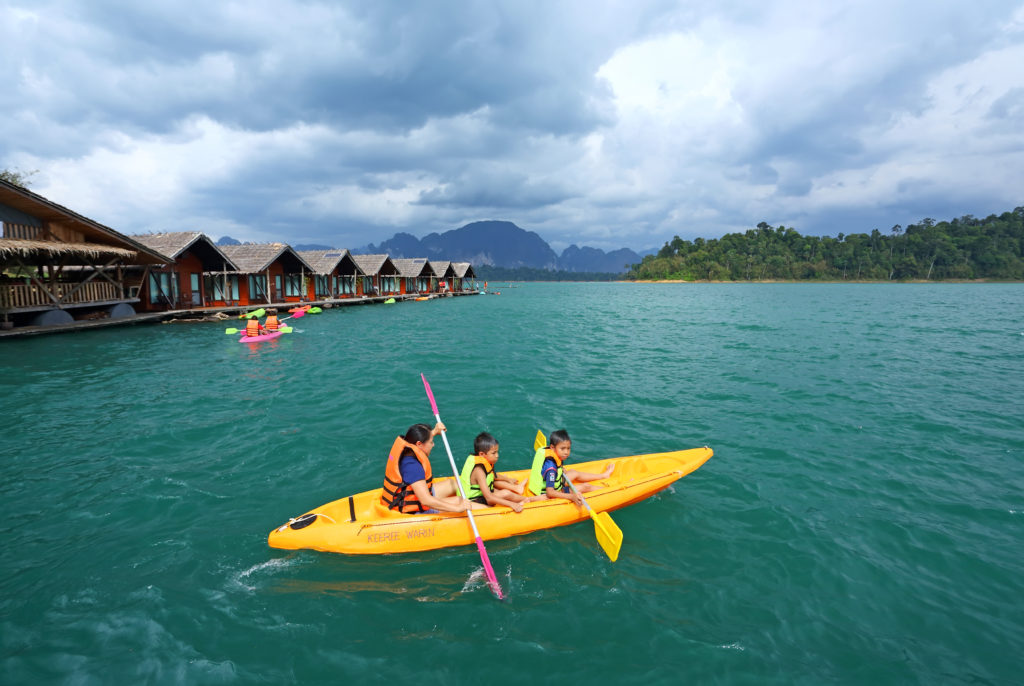
Adventures Around Cheow Larn Lake
The Thai government dammed up the Pasaeng River in the mid-1980s for a hydropower project, creating a 165 sq. km. reservoir called Cheow Larn Lake within Khao Sok’s borders.
Tourists now come in droves to kayak or swim in Cheow Larn’s waters and admire the natural sculpting of the karst cliffs around the lake banks. The local limestone landscape contributes to the striking emerald color of the waters and the unique formations looming over the waters.
Cheow Larn Lake can only be accessed from the marina next to the Ratchapraha Marina (Google Maps). Whether you’re just making a day-trip or staying overnight at any of the “floating bungalows” on the water, you can join in on any of the following lake adventures:
– Lake tours cover one end of the lake to the other in two hours, allowing tourists to get their fill of the incredible local atmosphere. Guides navigate and tell stories about the limestone formations the boat passes by.
– Boat safaris skirt the lake’s edge to see the wildlife playing next to the water. You might see an elephant drinking, longtail macaques chasing each other on the shore or great hornbills flying overhead. The boat safaris take place in the early mornings (usually no later than 7 am.) or just before sunset.
– Stay at a floating bungalow. From any floating resort accommodation around the lake, you can enjoy the lake at your leisure—swimming, kayaking or just gazing at the limestone while the sun shines overhead. Accommodations range from basic to four-star with en suite bathrooms and spa services.
The Best Time to Visit Khao Sok
The area around Khao Sok enjoys the highest levels of rainfall year-round in Thailand, averaging 3,500mm in total. During the rainy season from May to November, rainfall hits a maximum of 375mm in September. In the dry season, from December to April, the area sees lows of 30mm rainfall in February, the driest month on record.
Take the rain into account when you visit Khao Sok National Park. Certain activities won’t be available during the rainy season, including camping in the jungle and visiting Nam Talu Cave.
Wildlife spotting also becomes rarer in the rainy season, though the explosive greenery of the jungle may make up for the scarce amount of animals on view. River tubing or rafting on the Sok River will be better at this time with swifter currents brought on by the rain.
The cooler, drier months from November to February bring the most tourists to Khao Sok, and arguably the most animals, too. These are the best months to see elephants, gaur, and other large creatures on safari, along with sightings of the rare Rafflesia plant.



